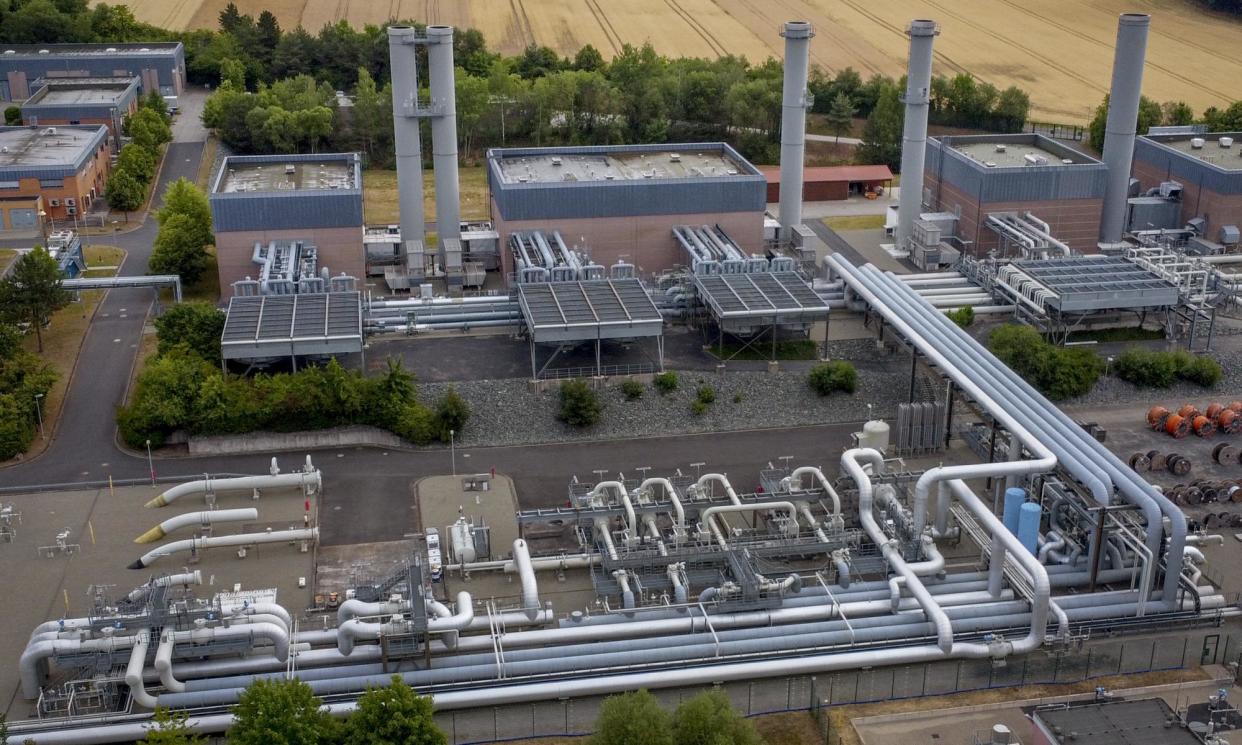Is Europe’s energy crisis over? Falling gas prices conceal wider problems

Europe is leaving behind the winter months with gas storage facilities brimming at all-time highs. This abundance of gas has allowed wholesale market prices to tumble, and home energy bills to drift down towards levels last seen before Russia’s full-scale invasion of Ukraine.
So after years in the grip of crippling costs for home heating and power is Europe’s energy crisis over? Experts have cautioned that waning gas and electricity markets and falling bills belie a deeper economic hangover that could extend into the next decade.
“Is the energy crisis over? No,” says Tomas Marzec-Manser, head of gas analytics at the data provider ICIS. “I would say that we’re managing the crisis. But the wider economic picture has become its own beast.”
For more than a decade before the Ukraine invasion of February 2022, Russian pipelines were Europe’s biggest single source of imported gas. After Moscow’s attack these imports plunged by two-thirds from their peak in 2019, causing a market shock that forced wholesale prices to almost 10 times the pre-crisis level.
Today there are clear signs that the immediate gas supply crunch that first emerged in the after the pandemic – and escalated after Russia’s war on Ukraine – has begun to show signs of easing.
Related: EU agrees plan to enable member states to end all gas imports from Russia
Europe has emerged from its second winter without access to Russian supplies with gas stores at a record 59% full, according to the industry body Gas Infrastructure Europe, thanks to pipeline imports from Norway and seaborne cargoes from the US.
Gas stores will be 95% full by the start of September this year, according to ICIS, well above an EU target to fill their facilities to 90% by November. This abundance of gas should mean that market prices will continue to fall.
Early forecasts suggest that Europe’s benchmark gas price may tumble to an average €28.32/MWh (£24.28/MWh) through the summer months from April to September, down by more than 17% from the average in summer last year, but still more than double the €11.58/MWh average recorded in the summer of 2019.
For electricity markets, benchmark prices are forecast to fall by more than a third from last summer to an average of €63.18/MWh between April and September, the lowest summer reading since 2020.
The slump in Europe’s energy markets has already filtered through to homes. In the UK, the regulator Ofgem’s energy price cap, which sets the maximum price that suppliers can charge per unit of gas or electricity, fell by £238 to £1,690 for the typical annual dual-fuel bill earlier this week – its lowest for two years.
“But lower prices alone are not enough to articulate the end of the energy crisis,” according to Marzec-Manser. “There’s a wider economic picture to consider.”
The recent fall in market prices is in part due to the economic gloom caused by the energy crisis itself, he says. Rising energy bills have triggered inflation across major economies, leading to a cost of living crisis that has slowed consumer demand for new products.
This in turn has reduced economic activity across Europe’s industrial heartlands, and has kept a lid on gas demand from heavy industry. Marzec-Manser expects industrial gas demand to remain 20% below pre-pandemic levels this year.
“Even though gas is more affordable there is still a diminished demand for products due to the cost of living crisis, which means industrial gas demand has not yet recovered,” he says.
A rebound in industrial demand would prevent gas prices from falling to pre-pandemic lows and serve to underline Europe’s growing reliance on more expensive sources of gas. EU countries have typically replaced Russia gas imports with seaborne cargoes of liquified natural gas (LNG), triggering a wave of investments in new import terminals to provide the gas to fuel an economic recovery.
Clean energy advocates have urged governments to do more to replace Russian gas imports with homegrown renewable alternatives. But Europe’s weaker market prices may be making it more difficult for clean energy developers to play their part in weaning economies off fossil fuels.
Robert Jackson-Stroud, an analyst at ICIS, says many energy buyers have seized the opportunity to lock in lower energy costs by striking long-term deals for renewable energy supplies at discount rates based on the forward curve for wholesale electricity prices.
For many developers the cost of building renewable energy projects, including wind and solar farms, has surged amid supply chain inflation triggered by the energy crisis. However, they are still being asked to sell the power they generate based on the weaker energy prices forecast for the years ahead.
The weaker market prices and higher supply chain costs also mean that government schemes to support investment in new power projects will become more expensive for the public purse, Jackson-Stroud added.
“It’s created a cycle which will echo through for another decade,” he says.


